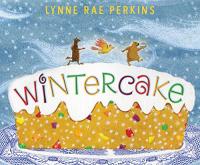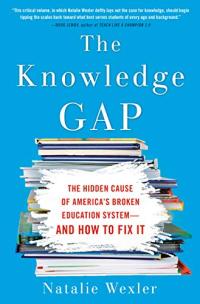
Suddenly “awake” in the middle of winter, a “big bear” explores a “cozy cabin,” which Bear of course “enters excitedly.” But the cabin isn’t empty — a little girl lives there. So begins an unlikely friendship and an unexpected adventure as the girl attempts to figure out what a bear is supposed to be doing in the winter. (Hint: It’s not eating pancakes or visiting the library!)
Bear Is Awake! An Alphabet Story

Former children’s poet laureate, J. Patrick Lewis, allows the polar bear tell us what he’s called in different cultures — White Bear, Ice Bear, Sea Bear, Sailor of the Icebergs, the Ever-wandering One. The Inuit’s say “I am Nanuk”). The devastating ending shows the polar bear adrift on a shrinking bit of ice, “losing hold” — a reference to how this Arctic animal is threatened by extinction and in need of human protection.
I Am Polar Bear

When Thomas misplaces the basket of dried fruit he needs to make his seasonal wintercake, friends old and new come together to save the day. This holiday tale is full of surprises and gentle humor, and a book about holiday traditions and why they matter. It’s also a story about making mistakes and how mistakes can sometimes lead to wonderful things!
Wintercake

Look! A line of paw prints in the snow. Follow the tracks to see the rare and majestic snow leopard and visit her secret world. Join a zoologist in the Himalayan mountains as he searches for the elusive creature. With her pale gold and silver-gray coat painted with black rosettes, she blends so well into the boulders, it’s no wonder she’s thought of as a ghost of the mountains. Written by a zoologist and interwoven with fascinating facts, this look at a fascinating animal includes an end note suggesting resources to explore.
Snow Leopard: Ghost of the Mountains

In the midst of a whirling snowfall, a girl and her father pile into their big red snow plow. Through slippery streets, up winding hills, they race — clearing the snow and heading for the train station to meet a very special traveler. The rhyming text is just right for one or two readers.
Snowy Race

“Help! I’m melting!” A boy rescues a snowball again and again in this funny story about a snowball that gets to see all four seasons. Back matter offers information about the seasons and the three states of water (solid, liquid, and vapor)
The Luckiest Snowball

Alone in the snowy woods with his dog, a boy discovers the wonder of winter trees, one at a time, in a big, quiet space. On every double-page spread, four lines of simple verse and bright linoleum block prints decorated with watercolor and collage capture the stark outlines and the details of what he sees, hears, and touches (“Crunch! Our footsteps make the only sound”). The botanical facts are part of the wonder (“Trees that once had leaves are bare”). (Booklist)
Winter Trees

This celebration of winter solstice blends imagery from the long-ago revelries of northern Europeans with modern-day observations and global traditions. As the sun set on the shortest day of the year, early people would gather to prepare for the long night ahead. They built fires and lit candles and played music, bringing their own light to the darkness. This is a tale of hope, anticipation, love, and joy.
The Shortest Day

A comprehensive source on young children’s development of writing that illustrates every concept with student examples. This book offers a detailed story of children’s development of writing, from scribbles to letters; from imaginative inventions to conventional spelling; and from enthusiastic utterances on paper to effectively structured compositions. Teachers will develop the skills needed to offer appropriate instruction and feedback for students at each point in the writing process.
The Beginnings of Writing

The 6+1 TRAIT model works by allowing teachers to pinpoint students’ strengths and weaknesses in ideas, organization, voice, word choice, sentence fluency, conventions, and presentation, and focus instruction. Like the groundbreaking guide for grades 3 and up (opens in a new window), this new book contains scoring guides, sample papers, and focus lessons for each trait, but framed to address K–2 teachers’ needs.
6 + 1 Traits of Writing: The Complete Guide for the Primary Grades

Firmly grounded in the authors’ Self-Regulated Strategy Development approach, which has been proven effective by two decades of research, these brief, powerful lessons will help transform struggling students into confident, skilled, and motivated writers. Teachers will get concise lesson plans they can use to easily supplement their existing writing curriculum.
Powerful Writing Strategies for All Students

This volume synthesizes current knowledge on writing development and instruction at all grade levels. Prominent scholars examine numerous facets of writing from sociocultural, cognitive, linguistic, neuroscience, and new literacy/technological perspectives. The volume reviews the evidence base for widely used instructional approaches. Issues in teaching specific populations — including students with disabilities and English learners —are addressed. Innovative research methods and analytic tools are explained, and key directions for future investigation identified.
Handbook of Writing Research

The Writing Revolution (TWR) provides a method of instruction that you can use across all subjects or grade levels. The model, also known as The Hochman Method focuses on specific techniques that match students’ needs and provide them with targeted feedback. There’s no separate writing block and no separate writing curriculum. Instead, teachers of all subjects adapt the TWR strategies and activities to their current curriculum and weave them into their content instruction.
The Writing Revolution

Whether they have learning disabilities or just need extra help, struggling writers can improve their skills dramatically if they get the detailed, explicit instruction they need. This practical guidebook shows elementary school teachers how to make this systematic instruction part of their classroom. Educators will find a wide range of specific strategies that include activities for every phase of the writing process, from brainstorming and goal-setting to revising.
Writing Better: Effective Strategies for Teaching Students with Learning Difficulties

Effective guidelines for teaching writing in grades K–12. Using classroom examples, the book identifies the components of a complete, high-quality writing program. Leading experts provide strategies for teaching narrative and argumentative writing; using digital tools; helping students improve specific skills, from handwriting and spelling to sentence construction; teaching evaluation and revision; connecting reading and writing instruction; teaching vulnerable populations; using assessment to inform instruction; and more.
Best Practices in Writing Instruction (Third Edition)

Learn why RTI is today’s best approach for preventing reading difficulties. For practitioners, the book provides a complete, evidence-based blueprint for using RTI and reading profiles in tandem to plan effective core literacy instruction and help struggling readers in Grades K-6, whether they have disabilities or issues related to experience (e.g., ELLs, children from poverty backgrounds). For researchers and policymakers, the book describes ways to help ensure higher reading achievement for every student, including improvements in core reading instruction, use of RTI practices and the Common Core State Standards, and teacher preparation.
The Power of RTI and Reading Profiles: A Blueprint for Solving Reading Problems

What are today’s best practices in early literacy instruction — and what should schools and programs focus on in the near future? More than 20 experts in early literacy research explore the answers in this essential volume for program directors, administrators, and curriculum developers. Using the landmark National Early Literacy Panel (NELP) Report (opens in a new window) as a starting point, this accessible book breaks the report down into key takeaways, recommends future directions in policy and practice, and tackles emerging issues and new research not addressed in the NELP report.
Early Childhood Literacy: The National Early Literacy Panel and Beyond

Today’s classroom is more diverse, more inclusive, and more plugged into technology than ever before. And it’s led by teachers under enormous pressure to help decidedly unstandardized students meet an expanding set of rigorous, standardized learning targets. In this updated second edition of her best-selling work, Tomlinson offers these teachers a powerful and practical way to meet a challenge that is both very modern and completely timeless: how to divide their time, resources, and efforts to effectively instruct so many students of various backgrounds, readiness and skill levels, and interests.
The Differentiated Classroom: Responding to the Needs of All Learners

A practical guide to help K–12 students enlarge their vocabulary and get involved in noticing, understanding, and using new words. Grounded in research, the book explains how to select words for instruction, introduce their meanings, and create engaging learning activities that promote both word knowledge and reading comprehension. This updated edition includes chapters on vocabulary and writing; assessment; and differentiating instruction for struggling readers and English language learners, including coverage of response to intervention (RTI). There are also expanded discussions of content-area vocabulary and multiple-meaning words.
Bringing Words to Life, Second Edition: Robust Vocabulary Instruction

Neuropsychologist Willingham describes the incredibly complex and nearly instantaneous series of events that occur from the moment a child sees a single letter to the time they finish reading. The book addresses reading comprehension (from reading for understanding at early levels to inferring deeper meaning from texts and novels in high school), the connection between reading and writing, and the important role of motivation. Willingham also explores the effects of technology on learning to read and reading.
The Reading Mind: A Cognitive Approach to Understanding How the Mind Reads

Hirsch draws on recent findings in neuroscience and data to provide new evidence for the argument that a carefully planned, knowledge-based elementary curriculum is essential to providing the foundations for children’s life success and ensuring equal opportunity for students of all backgrounds. In the absence of a clear, common curriculum, Hirsch contends that tests are reduced to measuring skills rather than content, and that students from disadvantaged backgrounds cannot develop the knowledge base to support high achievement.
Why Knowledge Matters

Cognitive scientists have known for decades that the most important factor in comprehension isn’t a set of generally applicable skills; it’s how much background knowledge the reader has about the topic. And yet, in most American elementary schools, teachers are not given the training and support they need to provide deep, rich content — about history, social studies, science, language and the world around them. In this book, education journalist makes the case for bringing content knowledge back into classrooms.
The Knowledge Gap

This 2018 revised edition provides a collection of tests for the comprehensive assessment of skills related to reading. These assessments can help teachers identify why a student is having reading difficulty and determine what the next step in instruction should be to remediate that difficulty. The assessments are intended to assist the teacher in determining the instructional needs of all students and in monitoring progress throughout the course of instruction
Assessing Reading: Multiple Measures

Louisa May Alcott is best known for penning Little Women, but few are aware of the experience that influenced her writing most — her time as a nurse during the Civil War. Caring for soldiers’ wounds and writing letters home for them inspired a new realism in her work, including Little Women, which was one of the first novels to be set during the Civil War.
